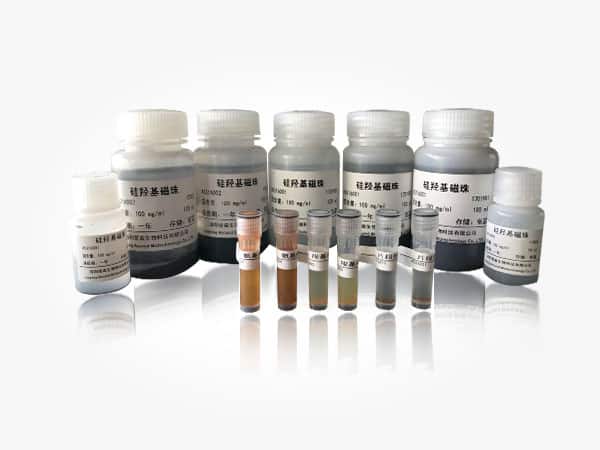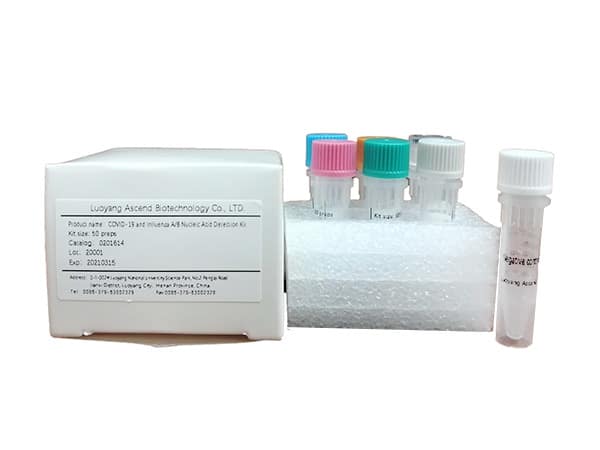What are the common misunderstandings in the process of magnetic bead nucleic acid extraction?
The use of biological magnetic beads for nucleic acid extraction is still a relatively novel nucleic acid extraction method in China. Compared with the traditional chloroform isoamyl alcohol extraction method and spin column kit method, this method is still understood by many people. There are also some misunderstandings in the process of using magnetic beads to purify nucleic acids.
Misunderstanding 1: The more magnetic beads used, the better the extraction effect
Many teachers like to increase the amount of magnetic beads when the extraction effect is not good. They think that adding a little more magnetic beads can attract more nucleic acids. I have to say that this idea is not advisable.
The main feature of magnetic beads is that they can be dispersed in a liquid or separated from a liquid phase in a solid state under the action of an external magnetic field. For any reagent system, the ratio of magnetic beads to liquid should have a certain threshold, exceeding a certain ratio Excessive magnetic beads will lose their dispersion characteristics because they cannot be uniformly dispersed in the liquid, and the efficiency of contact between the nucleic acid magnetic beads and the liquid cannot be fully increased during the washing process. Excessive magnetic beads will also adsorb more impurities, which has a great influence on the effect of impurity removal. Even sometimes, too many magnetic beads will adsorb protease, lysozyme and other functional components that play a major role in the liquid system, resulting in low efficiency of the entire kit. In many cases, when the extraction effect is not good, reducing the amount of magnetic beads used is the best way to improve the extraction effect.
Normally, the amount of reference magnetic beads given by the magnetic bead method kit is slightly excessive. Therefore, it is not often necessary to increase the amount of magnetic beads to improve the adsorption efficiency. However, if it is determined that the extraction effect is not caused by insufficient amount of magnetic beads Well, it is possible to improve the extraction effect by increasing the amount of magnetic beads within a certain range.
Take GNT-02 series magnetic beads as an example. When extracting macro samples (plant tissue, whole blood, etc.), the usual dosage is 10ul/time; when extracting trace samples (such as serum free DNA, buccal swabs, etc.), magnetic beads The dosage is 15~20ul/time. If you need to exceed this usage, you need to communicate with a technical engineer.

Misunderstanding 2: The more reagents used, the better the extraction effect
The cracking effect is not good? Add more lysis buffer. The washing effect is not good? Add more detergent. This is the inertial thinking of many customers in the use of kits.
However, for the magnetic bead method, each increase in the volume of a part of the liquid reduces the probability of more magnetic bead collisions, and reducing the probability of magnetic bead collisions will result in a significant drop in the adsorption rate. Therefore, in many cases, although adding lysis solution and washing solution can indeed enhance lysis and enhance washing, the core of magnetic bead extraction is the efficiency of magnetic bead adsorption of nucleic acids. The efficiency of magnetic bead collision cannot be guaranteed, but the efficiency of nucleic acid extraction cannot be guaranteed. Yes, so simply increasing the amount of reagents used to improve the extraction effect may not be completely effective.
For the GNT-B02 whole blood genomic DNA kit, the general lysis solution should not exceed 400ul/time, and the washing solution should not exceed 500ul/time. If the system really needs to be amplified, the amount of magnetic beads and samples should also be increased accordingly. This amplification is not necessarily in equal proportions.
Misunderstanding 3: The more washing times, the better the extraction effect
When there are too many impurities in the extracted nucleic acid, the user will consider washing several times to obtain a purer nucleic acid. Increasing the number of washes is indeed conducive to the purification of nucleic acids, but considering that each wash will lose a certain amount of nucleic acid and increase the possibility of nucleic acid fragmentation and hydrolysis, it is generally appropriate to control the number of washes at 2 to 4 times.
For the GNT series of kits, the washing times of a single purification kit is 2 times, the washing times of plant and animal kits are 3 times, and the washing times of blood kits are 3~4 times.
Misunderstanding 4: The more samples are used, the better the extraction effect
When the sample is not fresh enough or the nucleic acid content itself is low, the nucleic acid extraction effect is often not good, and many teachers will use multiple samples to increase the amount of nucleic acid extraction.
However, simply increasing the sample sampling volume may sometimes introduce too many impurities, exceeding the lysing capacity of the lysate, and also reduce the extraction efficiency. Therefore, it is not recommended to simply increase the sample sampling volume to achieve the purpose of increasing the extraction volume.
If the extraction volume is indeed too low due to insufficient sample volume, it is recommended to go through the enrichment or concentration step before starting the extraction. Or increasing the completeness of lysis and exposing more nucleic acids is also a solution.

Misunderstanding 5: If a certain kind of magnetic bead is good, it should be effective in all tests
There are many types of magnetic beads, different particle size, different dispersion, different magnetic response time, different coating base matrix, different outer modified functional groups, different coating densities, and different functional group arm lengths, which will lead to magnetic beads Features vary greatly.
Therefore, the experiments and systems that different magnetic beads adapt to are also different. Just like the reagents for nucleic acid extraction, the formulas are not exactly the same, and the properties of the magnetic beads that are also used for nucleic acid extraction are not exactly the same.
Some magnetic beads show higher adsorption efficiency in the extraction of constant nucleic acid, and some magnetic beads are more suitable for the extraction of trace nucleic acid. Some magnetic beads are suitable for more acidic reagent systems, and some magnetic beads are suitable for more alkaline reagent systems. Some magnetic beads have good magnetic responsiveness but fast settling speed, which is more suitable for magnetic rod type automatic extractor; some magnetic beads have slow settling speed but long magnetic response time, and are more suitable for pipette type automatic extractor.
There is rarely a kind of magnetic beads that can be applied to all experimental situations. Except for the fixed kit, in most cases, the magnetic beads and the reagent system need to be adjusted for a certain period of time.
Misunderstanding 6: Compared with a certain kit, the effect is not good, that is, the magnetic beads are not good
In the process of screening magnetic beads, many customers simply replace the magnetic beads with the same amount under the mature reagent system to compare the effects of magnetic beads.
In this way, it is easy to conclude that certain magnetic beads are not effective, but in fact, because different magnetic beads are suitable for different systems and dosages, they often need to be adjusted to obtain better extraction results.



